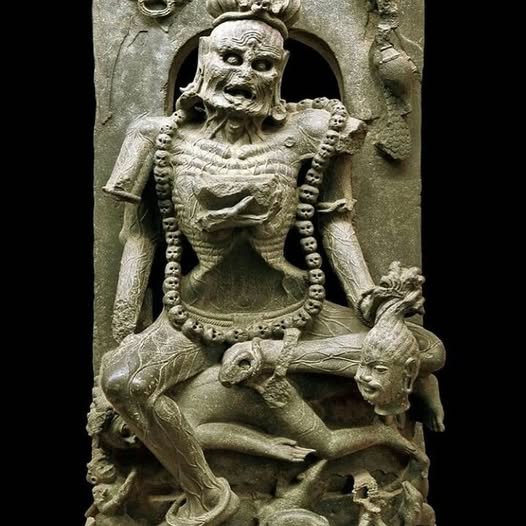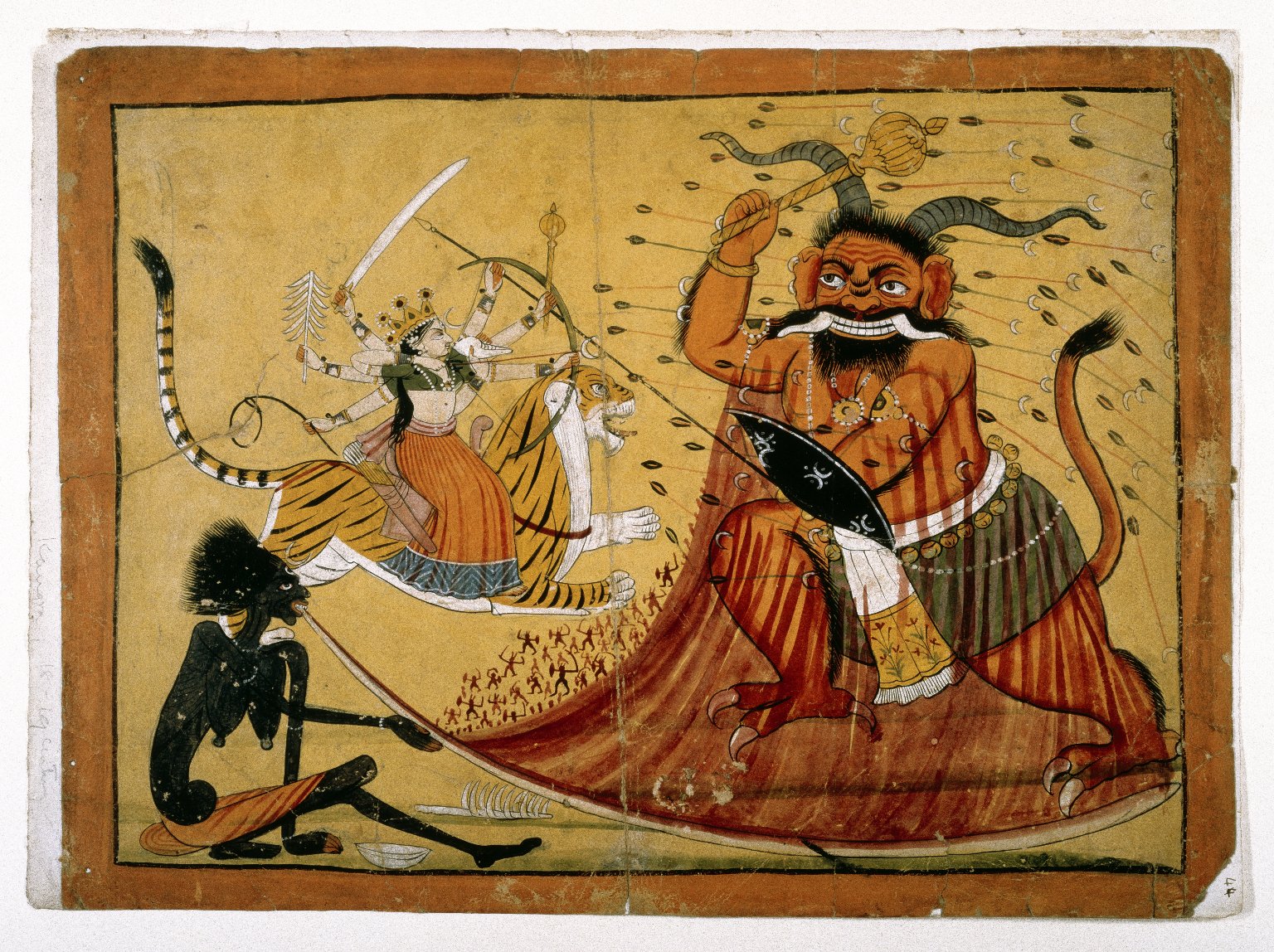The eighth chapter of the Durgā-Saptaśatī tells us about the myth of the demon Raktabīja, and how the Goddess Caṇḍika vanquished him. The text mentions that from every drop of blood that Raktabīja shed, another Raktabīja was born, making it impossible to vanquish him using weapons alone. Upon seeing this, the Goddess Caṇḍika commanded the Goddess Cāmuṇḍā to swallow every drop of blood spilt before it could touch the ground. In this way, Caṇḍika defeated Raktabīja.
Can this mythical battle between the source of all knowledge, the “manifestation of intellect in all beings” (5th chapter, Durgā-Saptaśatī), Goddess Caṇḍika and the powerful Raktabīja be symbolic of an interpersonal phenomenon? I argue that it can. In what follows, I will attempt to shed light on a unique way of looking at the commonplace phenomenon of how ignorance works.
Caṇḍika has been referred to as the destroyer of ignorance and the source of all knowledge throughout the Durgā-Saptaśatī and other Śākta texts. On the other hand, Raktabīja is a powerful demon who we can take to symbolise ignorance. What we then have is: Caṇḍika fighting against Raktabīja, and Her eventual triumph is verily the fight between knowledge and ignorance, and knowledge always wins this battle. However, here is the catch: Raktabīja is a unique demon — each drop of his blood is potent enough to instantly give birth to an equally powerful clone of him.
So, an onslaught of knowledge on ignorance, in this case, triggers an unending cycle: ignorance is increased manifold, with every attack against it, and more ignorance prompts stronger and more intense attacks on itself.

Isn't this a quotidian phenomenon? Let us think of two people: person A and person B, and that they disagree with each other. Let us also assume that person A is correct about something person B is incorrect about. Person A then, could be said to possess knowledge, and person B could be said to be ignorant about something.
In this scenario, after a certain point in the debate, the goal of the debate is shifted from knowledge production to merely proving the other person wrong. Both the debaters begin to attack each other, and far from being convinced that A might be talking sense, B is now agitated, and she further strays away from the truth as a result. This shift in the character of the debate makes it impossible for A to achieve her initial goal — which was to cast away B's ignorance — even though A is factually right and has great arguments. Thus, B is further pushed into ignorance and ignorance begins to dominate in the playing field.
At this point, let us introduce another character C, who also possesses knowledge and can correct B. C tries to get to the root of B's misconception by asking her questions, helping B see her mistake and as a result — even though B is initially hostile — knowledge dawns upon her slowly, and her ignorance is destroyed.
The difference between A and C is this:
A's approach is that of the onslaught — the approach of violently extending truth so as to shatter the opponent's misconception. C's approach, on the other hand, is that of consuming ignorance entirely so that what remains is knowledge. When A tries to disprove B's statements constantly, it is an onslaught that A is extending; A is breaking B's statements in halves. On the other hand, C's continuous questioning is eating away B's ignorance and helping her see the truth eventually by diving deep down into the reasoning paradigm of B, alongside showing B exactly which set of inferences is causing the error.
Perhaps A here could be thought of as Caṇḍika — one who goes to war with Raktabīja and tries to defeat him by attacking him with weapons. When Caṇḍika realizes that this would not work, She then asks Cāmuṇḍā to consume all the blood that is being shed by the countless clone-demons. And in this way, Raktabīja is finally defeated.
Thus, I argue that this myth from the Durgā-Saptaśatī reveals a fundamental truth about the method of knowledge production through dialogues and debates: to destroy ignorance, attacking neither the possessor of ignorance nor her reasoning helps. This could only tamper with the possessor's morale at most. This approach could also further push the mistaken person to the depths of falsity and thus produce even more ignorance in her.

Instead, consuming ignorance delivers the mistaken person from the depths of ignorance, and what she is left with is knowledge. The job of the deliverer of knowledge then, is much more complex and nuanced than simply attacking. She herself needs to be free from the clutches of self-ego to guide a mistaken person to knowledge. She needs to be detached from the desire to simply prove herself to be the more learned.
Perhaps this is why Cāmuṇḍā is also the greatest teacher — one who delivers Her worshippers from the darkness of ignorance.